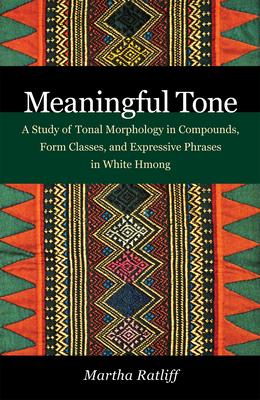Following U.S. military involvement in Indo-China in 1975, many of the Hmong--an ethnic group originating in Southwestern China and Southeast Asia who were persecuted by the communist organization Pathet Lao--became refugees. A large portion of them originally resettled in the Upper-Midwestern United States, but the largest population of Hmong is now in Minnesota and California. Today, there are diasporic communities in countries around the world, with over 200,000 in the United States alone. The commitment of these communities to their language and culture, their accessibility, and outside interest has combined to create an explosion of scholarship and Hmong language literature. The interest in and utility of the Hmong language are perpetually renewed by growing Hmong enrollment in schools and the number and strength of Hmong community groups. The migration and growth of Hmong and other Southeast Asian groups worldwide make this landmark language study crucial for ongoing research. In this pioneering and innovative morpho-phonological study, Ratliff, building on the 1965 and 1967 works of E. J. A. Henderson, describes the morphological functions of tone in Southeast Asian languages. While focusing specifically on the White Hmong language, one of the languages of the larger Hmong-Mien language family, the book investigates underlying ideas about the function of tone as an organizational tool in what Ratliff calls "small word" languages. She focuses on tone and its role in compounds, form classes, and expressives.

Following U.S. military involvement in Indo-China in 1975, many of the Hmong--an ethnic group originating in Southwestern China and Southeast Asia who were persecuted by the communist organization Pathet Lao--became refugees. A large portion of them originally resettled in the Upper-Midwestern United States, but the largest population of Hmong is now in Minnesota and California. Today, there are diasporic communities in countries around the world, with over 200,000 in the United States alone. The commitment of these communities to their language and culture, their accessibility, and outside interest has combined to create an explosion of scholarship and Hmong language literature. The interest in and utility of the Hmong language are perpetually renewed by growing Hmong enrollment in schools and the number and strength of Hmong community groups. The migration and growth of Hmong and other Southeast Asian groups worldwide make this landmark language study crucial for ongoing research. In this pioneering and innovative morpho-phonological study, Ratliff, building on the 1965 and 1967 works of E. J. A. Henderson, describes the morphological functions of tone in Southeast Asian languages. While focusing specifically on the White Hmong language, one of the languages of the larger Hmong-Mien language family, the book investigates underlying ideas about the function of tone as an organizational tool in what Ratliff calls "small word" languages. She focuses on tone and its role in compounds, form classes, and expressives.